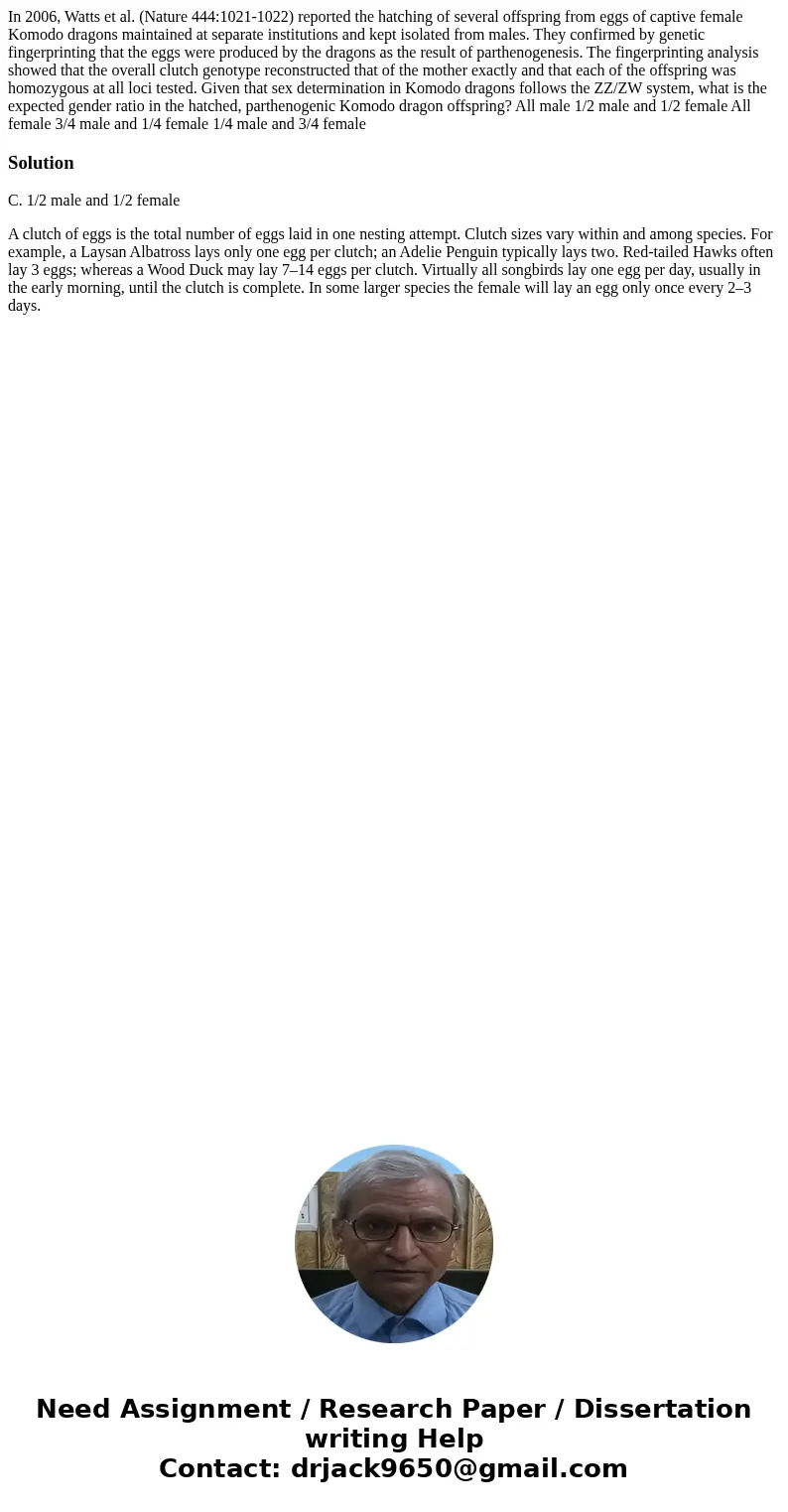In 2006 Watts et al Nature 44410211022 reported the hatching
In 2006, Watts et al. (Nature 444:1021-1022) reported the hatching of several offspring from eggs of captive female Komodo dragons maintained at separate institutions and kept isolated from males. They confirmed by genetic fingerprinting that the eggs were produced by the dragons as the result of parthenogenesis. The fingerprinting analysis showed that the overall clutch genotype reconstructed that of the mother exactly and that each of the offspring was homozygous at all loci tested. Given that sex determination in Komodo dragons follows the ZZ/ZW system, what is the expected gender ratio in the hatched, parthenogenic Komodo dragon offspring? All male 1/2 male and 1/2 female All female 3/4 male and 1/4 female 1/4 male and 3/4 female 
Solution
C. 1/2 male and 1/2 female
A clutch of eggs is the total number of eggs laid in one nesting attempt. Clutch sizes vary within and among species. For example, a Laysan Albatross lays only one egg per clutch; an Adelie Penguin typically lays two. Red-tailed Hawks often lay 3 eggs; whereas a Wood Duck may lay 7–14 eggs per clutch. Virtually all songbirds lay one egg per day, usually in the early morning, until the clutch is complete. In some larger species the female will lay an egg only once every 2–3 days.

 Homework Sourse
Homework Sourse